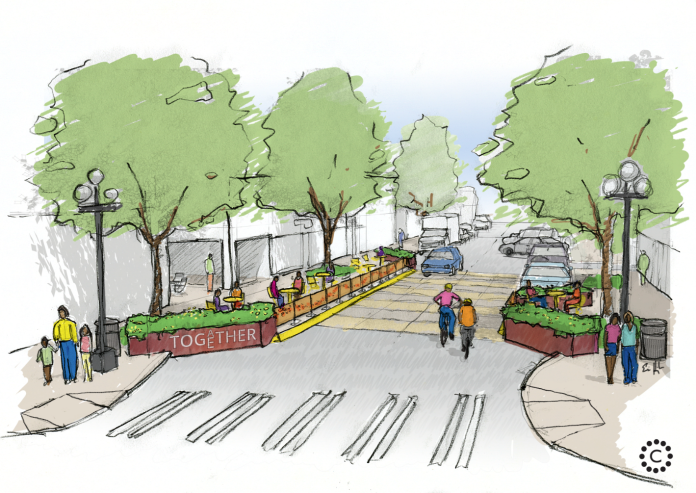
In mid-2020, as restaurant owners rushed to find ways to comply with brand new social distancing rules and city leaders scrambled to find a way to accommodate people who wanted more options for getting around within in their own neighborhoods, the results settled into now-familiar patterns: streateries in place of parking spaces, and Healthy Streets where pedestrians are not forbidden from walking in the street. But just off Rainier Avenue in Columbia City, a different model took shape. Half of South Ferdinand Street, steps from businesses like Geraldine’s Counter and Lottie’s Lounge, was closed to traffic and turned into a fenced area with around a dozen tables with chairs, open to all — not just patrons at specific restaurants.
Dubbed The Patio, the space was a hit with neighborhood residents and visitors alike. “Everyone just wants to be outside right now. That’s where people feel safest,” Emily Eberhart, the owner of Columbia City Alehouse, at the time the bar’s manager, told the South Seattle Emerald in August of 2020. “It’s day one for us today, and I’ve already had two regulars and community members ask, ‘How can we make this last all year?’”
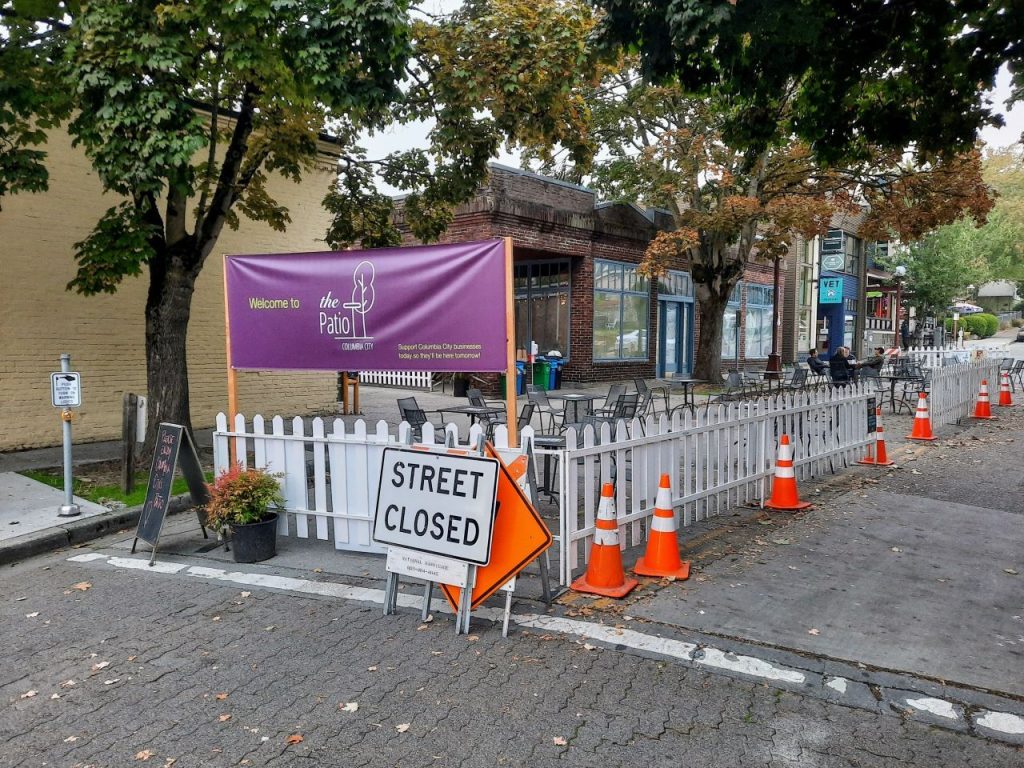
Ultimately, the Patio’s temporary street permit expired and the street was reopened to two-way traffic. But a group of Columbia City community members have been working behind the scenes, trying to figure out how to recreate the core function of The Patio as a unique center for civic life in the neighborhood. For two years, a group calling itself the Friends of the Ferdinand Festival Street has been working with the Seattle Department of Transportation (SDOT) to find a permanent design that serves the same function that the Patio did and also gains the approval of the City, nearby business and property owners, and residents.
“Covid started to kind of wind down and there’s a temporary permit for the Patio space. And the conversations just kind of started about like, ‘Okay, what do we do now? Can we do something more permanent here?'” Eric Higbee, a landscape architect and a member of the Friends group, told The Urbanist. “Because I think there was kind of an aha moment for Columbia City as a whole like, wow, it was cool public space, something where people can come out and gather, bump into each other and eat food and hang out.”
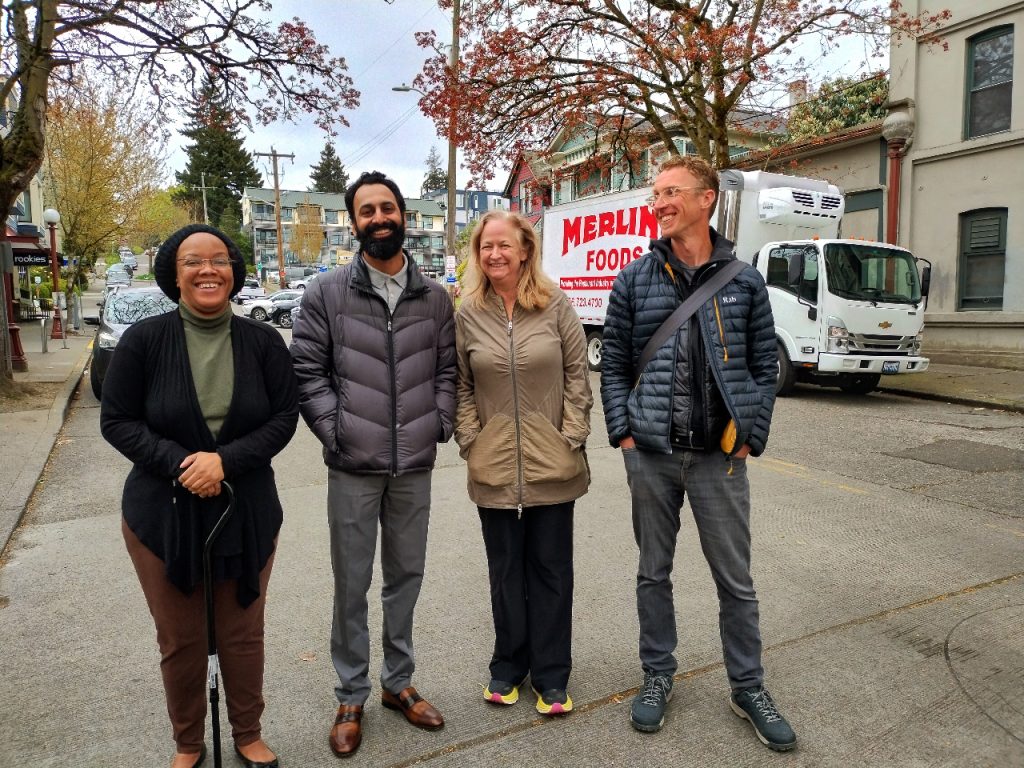
“[Having] a truly public space where you can go and you can sit and you can rest, and you can visit with people without having to buy something without having to be in a car… I think that that’s critical for our neighborhood to continue to be as friendly as we already are,” said Ali Zuberi, another member who has an office along S Ferdinand Street.
Seattle’s transportation levy proposal, set to be amended and ultimately approved by the city council in the coming months, currently includes a brand new $57 million allocation intended to allow SDOT create people-centric streets that aren’t entirely focused around moving people in and out. The Ferdinand festival street could potentially serve as a model for what those spaces look like — and also an illustration of the compromises that get made on the way to turning big ideas into reality.
In trying to find a design that turned the Patio permanent, the Friends started to have conversations about what designs nearby business owners — and property owners, even more reluctant to see things change — would be able to get on board with. “The picture became really complicated pretty quickly,” Higbee said. “We heard pretty clearly from a lot of local businesses that they weren’t ready for a partial street closure.”
“We also had a lot of pushback from property owners around the one-way traffic,” Kate Bond told The Urbanist. Bond is a core member of the Friends and the group’s conduit to the area’s small businesses as a member of the Rainier Ave Business Coalition. “One of the things that’s happened since we first floated the festival street is that the parking lot across the street got sold. And so that really brought about a whole new round of fears.”
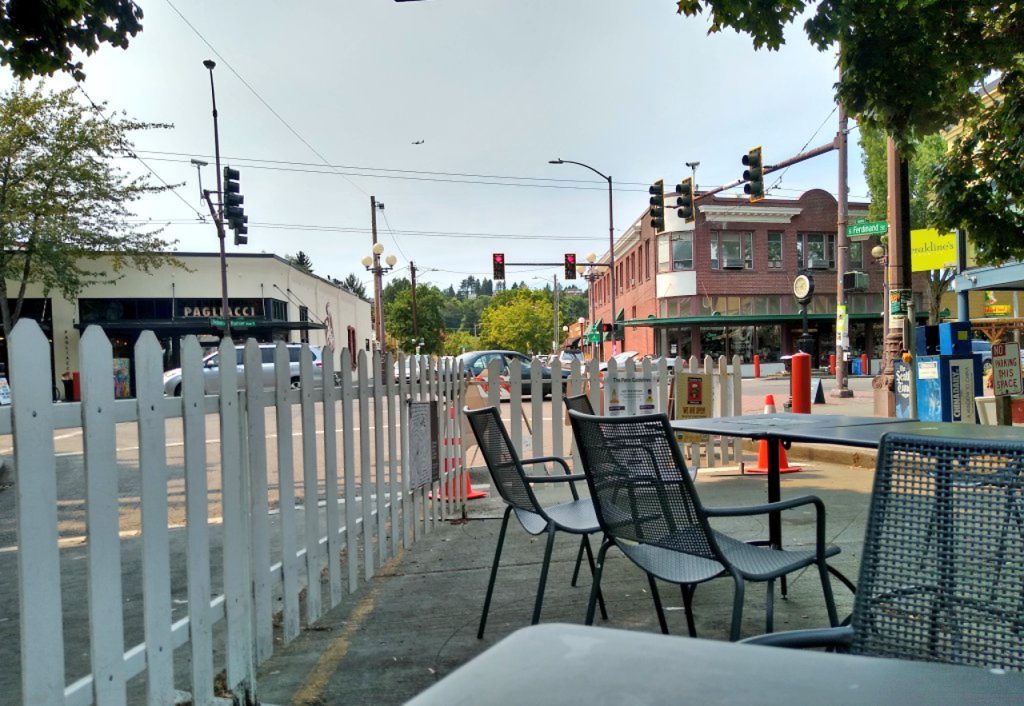
“In our conversations with those business owners, it was like: we can keep pushing this, and it’s just gonna get really divisive. And it’s gonna pull apart the community. It’s going to head down an us-versus-them track, it’s going to turn into this thing. And in the end, we decided that it was better to compromise on the entire footprint on the design and take a long term game with it.”
The design moving forward toward final approval at SDOT would maintain two-way operation on Ferdinand, turning the parking area along the north side of the street into a seating area that connects with the alleyway behind Geraldine’s Counter. The design also includes a smaller seating area on the south side of the street. Anticipated upcoming sewer work on the south side of the street in front of Lottie’s impacted the decision to include a scaled-back design on that side of the street.
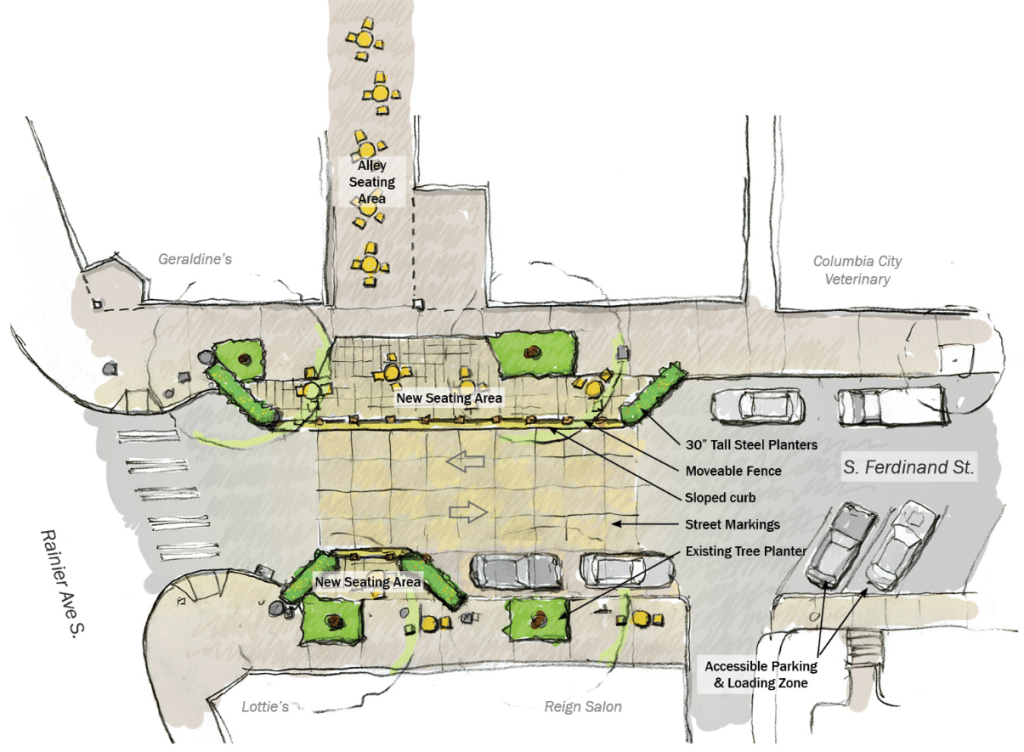
Like at other “festival streets” around the city, including the S Roberto Maestas Festival Street in front of Beacon Hill Station and E Barbara Bailey Way at Capitol Hill Station, a big element of the design is the ability to implement temporary closures of the street for events. An important element for the Friends was making sure the space could remain versatile, to match the wide array of uses that people found for the Patio space.
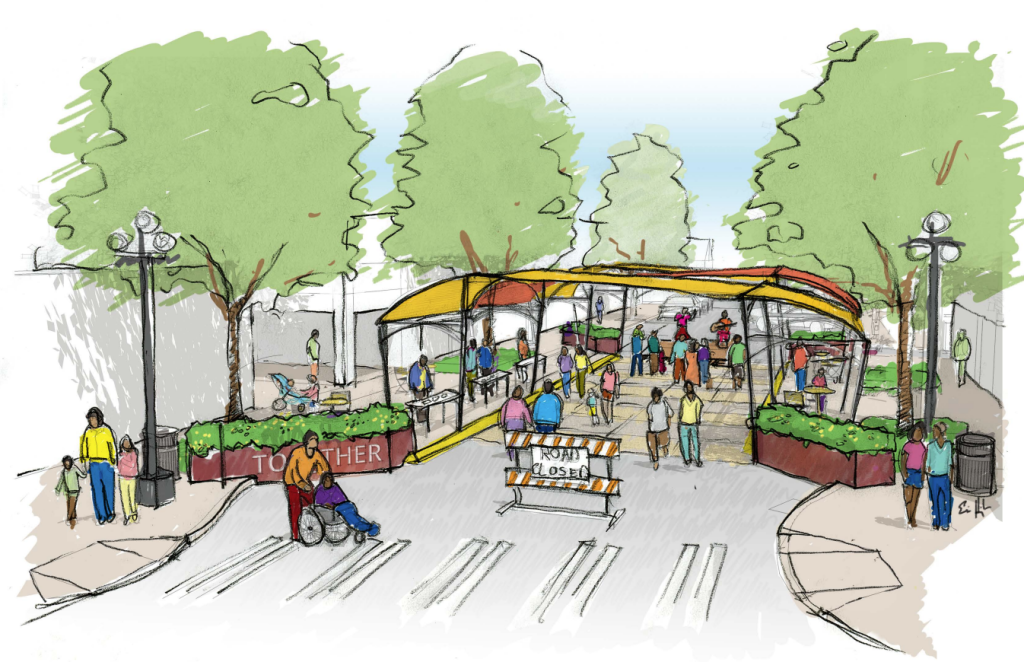
“There was a lot of music out there,” Bond said. “There was a [textile] dying event that Eileen Fisher does every year that they did out there. There were two of celebrations of life out there. There was Qigong classes that happened — [and] covert wine tastings. Yeah, there were so many things that people wanted to do in the space.”
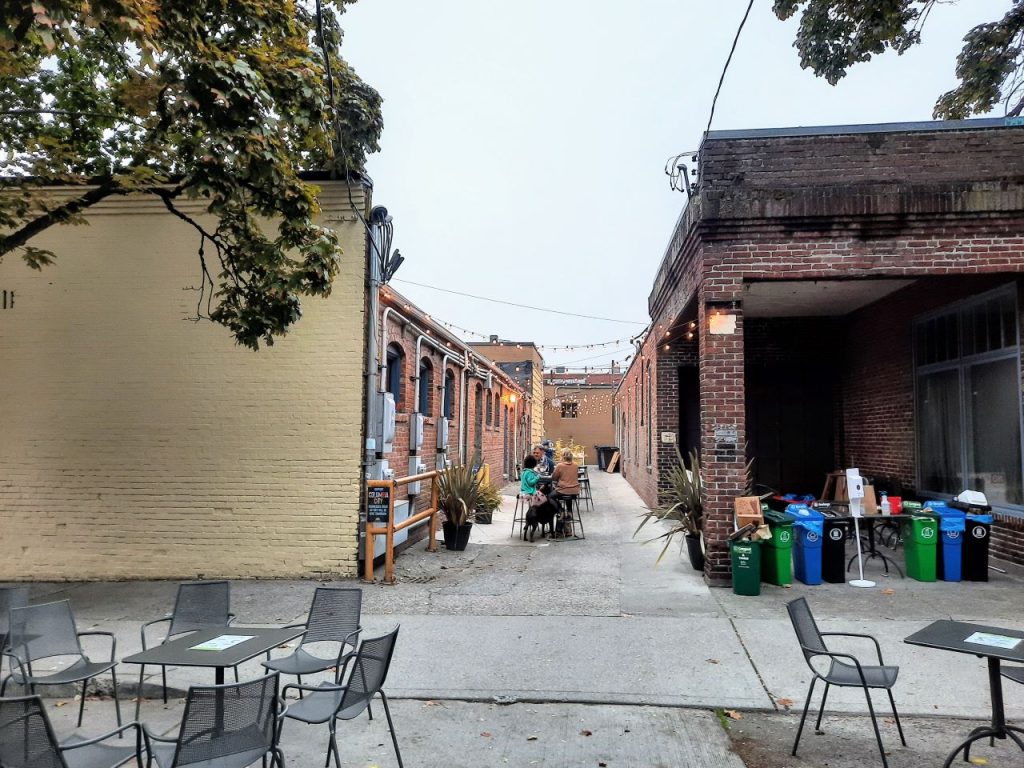
The group addressed the question of nearby residents and visitors who want to see the festival street fully close Ferdinand and reallocate space away from cars, and who may see the retreat from the footprint of the Patio as something of a retreat.
“The people that are anti this project seem to think, not that it shouldn’t happen at all, but that we’re not going nearly as far as we ought to go,” Zuberi said. “I mean, go ahead — you try.”
In April, SDOT solicited public comments on the Ferdinand Street proposal, and if all goes according to plan, the group hopes to see the street transform by this summer.
Ryan Packer has been writing for The Urbanist since 2015, and currently reports full-time as Contributing Editor. Their beats are transportation, land use, public space, traffic safety, and obscure community meetings. Packer has also reported for other regional outlets including BikePortland, Seattle Met, and PubliCola. They live in the Capitol Hill neighborhood of Seattle.

